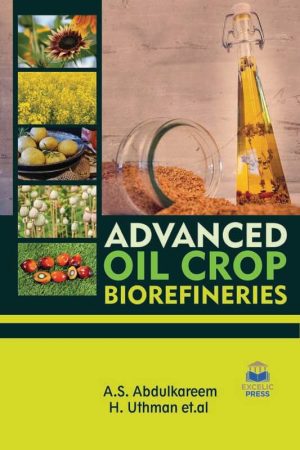Description
The energy crisis is a growing global concern nowadays because of the dependence on petroleum-based fossil fuel which is exhausted very fast to meet the continuously increasing demands. Besides, fossil energy also has a direct impact on the atmosphere. Energy sources and their utilization determine the economic status and growth of developing countries all over the world. It is evident that the consumption of oil, coal and natural gas greatly exceeds the consumption of renewable energy and hydroelectricity. The result of unlimited consumption of fossil energy, due to its low cost and ready availability is a severe depletion of the natural reserves. However, the use of fossil fuels also leads to environmental damage. Consequently, it is an ongoing interest to find out a renewable and environmentally friendly source of energy for our industrial economies and consumer societies. Bioethanol in this aspect is an attractive option for renewable and sustainable energy sources. Depleting fossil reserves and increasing demand for energy together with environmental concerns have motivated researchers towards the development of alternative fuels which are eco-friendly, renewable and economical. Bioethanol is one such dominant global renewable transport biofuel that can readily substitute fossil fuels. Conventionally, bioethanol has been produced from sucrose and starch-rich feedstocks.
This book opens with a review that discusses research progress in bioethanol production from sucrose, starch, and cellulosic feedstocks. Development of efficient technology to convert lignocellulosic biomass into fermentable sugars and optimization of enzymatic hydrolysis using on-site/ in-house enzyme preparation are the key areas of development in lignocellulosic bioethanol production.
Bioethanol production from renewable sources to be used in transportation is now an increasing demand worldwide due to the continuous depletion of fossil fuels, economic and political crises, and growing concern on environmental safety. In the second chapter, this book will investigate ethanol production from free sugar-containing juices obtained from some energy crops such as sugarcane, sugar beet, and sweet sorghum that are the most attractive choice because of their cost-effectiveness and feasibility to use. Further, a discussion on the processes and current research activities in bioconversion of weed biomass to bioethanol is presented. Succeeding chapters focus on innovative techniques of the Production of Bioethanol. Biotechnological strategies to improve plant biomass quality for bioethanol production are also elaborated. In closing the book, you will find a chapter that examines the history and challenges of bioethanol production in sub-Saharan Africa (SSA) and demonstrates the bioethanol production potential in SSA with a focus on using bitter sorghum and cashew apple juice as unconventional feedstocks for bioethanol production. Over the past decade, the production of bioethanol and biodiesel has been extensively investigated worldwide and the production methods proved successful in the USA and Brazil. However, in Sub-Saharan Africa (SSA) large-scale industrial production and commercialization are stagnant. Thus, this chapter is to provide a review on the potential of bioethanol as a type of biofuel in SSA.





